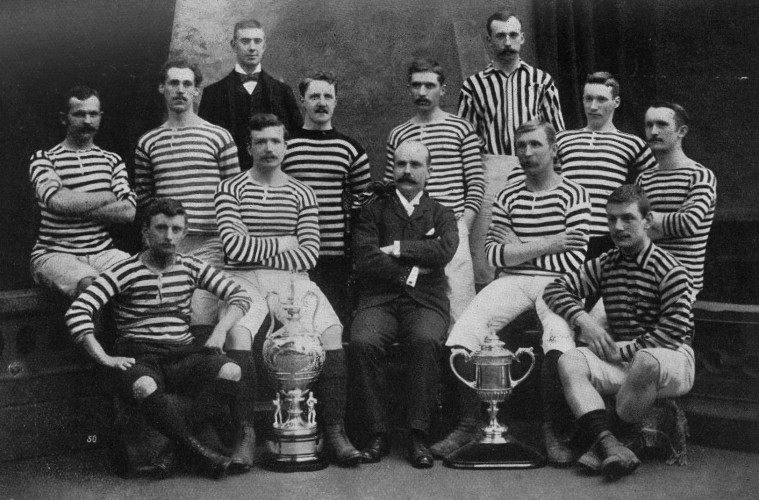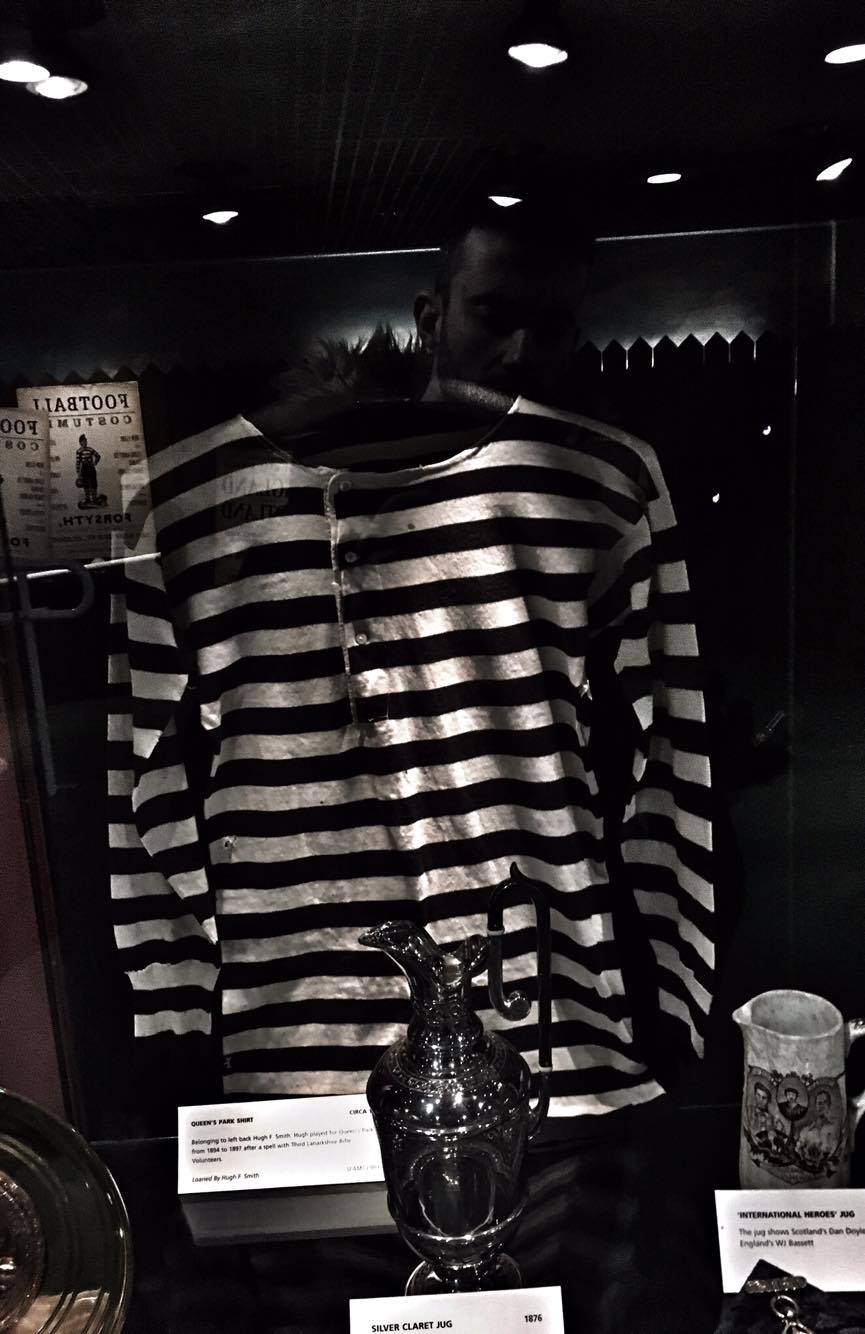Translation of Queen’s Park Panenka article
Very recently, Ignasi Torne, a Spanish journalist, contacted the museum looking for information on Glasgow clubs outside of Celtic and Rangers. After conducting an interview with one of our staff members, Stuart Spencer, Ignasi was amazed by the history of Queen’s Park that he decided to publish his article solely on the Spiders. The following is a translated version of his article from Panenka magazine.

Queen's Park team with trophys
‘Lundere causa ludendi’
Glasgow is more than just Celtic and Rangers. It is also Queen’s Park, whose motto is play for the sake of playing. We look back at their past and analyse their present.
Glasgow is a football city and a city full of passion. Glasgow breathes football and you feel that from the first moment you arrive at Glasgow Central Station and then walk through the streets of the working class city. Even over a pint in a West End pub, you’re reminded about Scottish football: of Celtic and Rangers. But that would be mistaken because as Stuart from the Scottish Football Museum told me, Glasgow is also home to one of football’s most romantic stories.
This is the story of a team that lives away from the main focus of Scottish and international football media. It is a team that even gave up its colours to its country’s national team. In fact, the national team plays in their stadium, because Hampden Park is this club’s property. And the blue of the ‘Tartan Army’ doesn’t come from the Saint Andrews flag, but from the blue that Queen’s Park Football Club used to wear.
Queen’s Park FC was founded in 1867 and this year they celebrate their 150th anniversary. They were a pioneer of Scottish football and the team that created the passing game that is now played across the world. The founding fathers of the club helped to promote international football, such as when they loaned to the national team all of the players who took part in the 1872 first international lineup. They also gave up their colours to the national team and switched to black and white horizontal stripes. Their stadium, a temple of European football, was opened in 1903 by Queen’s Park and it does not belong to the Scottish FA, but to the team that now competes in the Scottish League One (equivalent to the Spanish Segunda B). It wouldn’t be until three years later that the national team would play at Hampden. Queen’s Park was a team that dominated Scottish football and they are, behind Celtic and Rangers, the team with the third most Scottish Cups, while they’re also the only Scottish team to play in the English FA Cup final when they reached the finals of 1884 and 1885. Yet their last Scottish Cup was won back in 1893.

Above: One of the earliest Queen’s Park Jerseys, after they changed their strip to black and white hoops, on display in our museum.
World War One shorted their victorious era, as matches were cancelled due to the conflict as a result of the fact that many players were in the British army. The ‘hoops’ weren’t able to escape the conflict and they were one of the worst affected by the war as they lost 33 players, directors and ex-players. Robert Christie, John Barbour and Eddie Garvie were key players and also played for Scotland, but they lost their lives in conflict. The Scottish Football Museum currently has a Queen’s Park Roll of Honour, which honours those who did not return.

Above: The Queen’s Park Role of Honour which sits in our museum.
Unlike the bigger two teams of the city, Queen’s Park has never identified with one political movement or religion. Although they are respected by the fanbases of other Glasgow teams Celtic, Rangers, Partick Thistle and Clyde FC, their derby with Rangers dates back to the 19th century, when the old age of those two clubs made that derby the game of the year.
This year ‘The Spiders’ are playing with that famous blue shirt that made them famous in order to mark their 150 years of history, while the black and white stripes are this year found on the second kit.
Their ‘Lundere Causa Ludendi’ motto perfectly reflects the club’ amateur philosophy because they were and still are the only amateur team in the top four divisions of Scottish football. Even though their players don’t receive a wage and play for the love of the sport, they are still one of the most successful Scottish teams. So that is what their motto of ‘play for the sake of playing’ means and the club thereby sets the standard for the ‘against modern football’ movement as they are a unique institution in world football and one that is admired by its rivals.
Their supporters don’t believe in the financial side of the game, but they believe in the history of a team that has never sold out to professionalism, instead sticking true to the idea of the beautiful game. These are values that are totally faded from today’s game. It’s not hard to understand and appreciate the day to day sacrifices that the Queen’s Park squad make in order to play in front of a proud support that attends Hampden Park, a 52,000-capacity stadium, each weekend. It is a big stadium that, metaphorically, is small in comparison to the great Queen’s Park love story. A visit to Hampden Park’s Scottish Football Museum is a must-visit for any fan of the old passing game.
Book your place
Discover a national football collection to educate and inspire future generations.
Book online or call us today on 0141 616 6139.
Tickets from £8
Tours from 45 minutes

